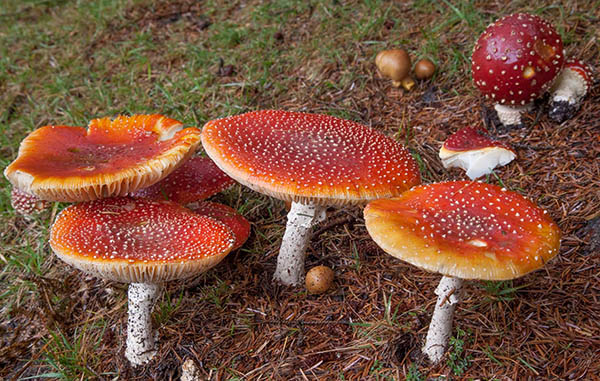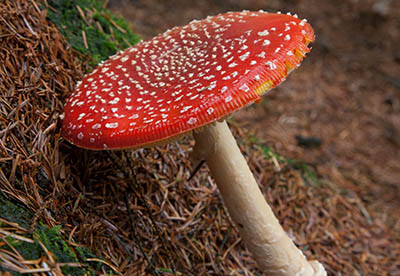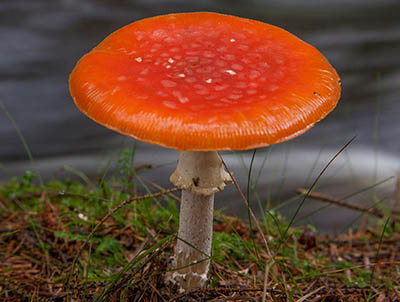This small series celebrates the stunning display of fungi that is visible here in Ladyclough Woods in the autumn. This damp woodland offers the perfect growing conditions for quite rare types of mushroom which flourish late in the year. All photographs on the listings have been taken by me in Ladyclough, although not necessarily next to the hide. It is of course still a very pleasant area for a walk here at any time of year. The final for the 'Masked Mast - Snake in the Pass' multi is also hidden is this wood, remember to have a look for the hidden mast before you come - it really is an extremely easy multi and the first stage can be completed literally as a driveby.
Click here for the Forestry Commission website giving information about this trail. This is one of a small number of caches hidden on the white trail of the Forestry Commission's Ladyclough Wood, and these have all been hidden with their kind permission. Please respect the area and remember the Forest Commission have given their permission for these caches on the understanding you will respect any trail closures if they are felling or working in the area. Please note, part of the wood has been felled and the path can be a little tricky to follow for a brief period.
The Fly Agaric, Amanita muscaria, is a hallucinogen and must be considered poisonous. These attractive fungi often appear in groups and are a common sight in all kinds of woodlands. When they first emerge from the leaf litter of the forest floor, the young fruitbodies are covered entirely in pointed white warts. As the caps expand the red pellicle shows through until eventually the cap comprises mainly red skin with white warts distributed more or less evenly across its surface in the way shown on the photograph. Heavy rain or even contact with animals is sometimes sufficient to remove some or all of the white flakes from the cap of a Fly Agaric, so you may see some 'bald' specimens.

The common name for the mushroom is 'Fly Agaric' and this is a reference to the tradition of using this mushroom as an insecticide. In some European countries caps of Amanita muscaria are crumbled up and placed in saucers of milk to attract house flies. The flies drink the milk, which contains toxins - they are soluble in water and hence in milk also - dissolved from within the mushroom, and the flies soon become drowsy, collapse and die (or they simply drown in their spiked milk drink). The specific epithet muscaria comes from the Latin word musca, meaning 'a fly'.

It may well be that Lewis Carrol (Charles Lutwidge Dodgson) had experienced the hallucinatory effects of Amanita muscaria. In Alice's Adventures in Wonderland, Alice eats part of one side of a mushroom and grows shorter; a piece from the other side would make her taller. A sleepy caterpillar sitting on the mushroom spoke to Alice in a manor that suggested it may have been suffering from the effects of eating it. Father Christmas, or Santa Claus, has a red-and-white coat that may also be a reference to the Fly Agaric. Reindeers are known to eat Amanita muscaria mushrooms - and indeed, how else is a reindeer going to be able to fly? There are reports of Siberian people, seeing the drunken behaviour of a reindeer that had eaten Fly Agarics, slaughtering the beast in order to get the same mind-bending effects from eating its meat. Cooking this mushroom may not kill the toxins and as with all mushrooms on the trail, we strongly do not recommend eating it, death can occur.
